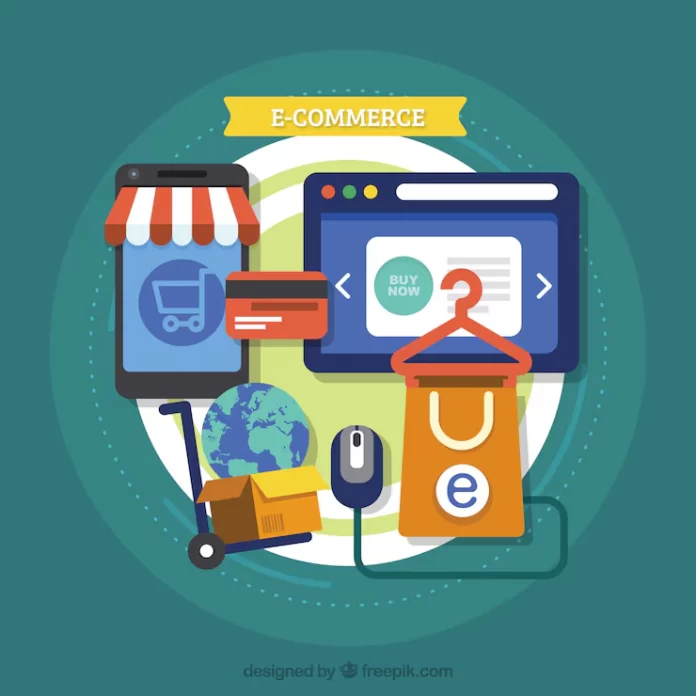What is an eCommerce Business?
An eCommerce business is a commercial enterprise that sells products or services exclusively through digital channels, primarily via websites, mobile applications, or online marketplaces. Unlike traditional brick-and-mortar retail, an eCommerce business operates 24/7, reaches global audiences, and leverages automation to minimize operational overhead.
The eCommerce business model has fundamentally transformed retail economics. According to recent industry data, global eCommerce sales are projected to surpass $8 trillion by 2027, representing nearly 25% of all retail transactions worldwide. This explosive growth creates unprecedented opportunities for entrepreneurs willing to master digital commerce fundamentals.
Why Start an eCommerce Business in 2026?
The compelling advantages of launching an eCommerce business today include:
Lower Barriers to Entry: Starting an eCommerce business requires significantly less capital than traditional retail. You can launch a professional online store for under $500, eliminating expensive lease agreements, physical inventory requirements, and large staffing costs that burden conventional businesses.
Global Market Access: Your eCommerce business isn’t restricted by geography. A store launched from anywhere can immediately access billions of potential customers across continents, with integrated payment processors and international shipping making cross-border commerce seamless.
Scalability Without Proportional Costs: Unlike physical stores that require new locations to grow, an eCommerce business scales through traffic and optimization. Your infrastructure costs increase marginally even as revenue multiplies.
Data-Driven Decision Making: Every interaction in your eCommerce business generates actionable data. You’ll know exactly which products sell, where customers abandon purchases, and which marketing channels deliver the highest return on investment.
Flexible Business Models: The eCommerce business framework accommodates multiple revenue strategies, from dropshipping with zero inventory to subscription models generating predictable recurring income.
Types of eCommerce Business Models: Which Fits Your Goals?
Selecting the right eCommerce business model determines your profit margins, operational complexity, and growth trajectory. Here are the five dominant models entrepreneurs use today:
1. Dropshipping eCommerce Business
How It Works: You market and sell products without holding inventory. When customers purchase from your eCommerce business, orders automatically forward to suppliers who handle fulfillment and shipping directly.
Advantages: Minimal startup capital required, no warehouse management, and the ability to test hundreds of products quickly. This eCommerce business model lets you validate markets before committing resources.
Challenges: Lower profit margins (typically 10-30%), less control over shipping quality, and intense competition since barriers to entry are minimal.
Best For: First-time entrepreneurs learning eCommerce business fundamentals or those testing new product categories with limited budgets.
2. Private Label eCommerce Business
How It Works: You source generic products from manufacturers, apply your unique branding and packaging, then sell them as proprietary items through your eCommerce business.
Advantages: Higher profit margins (40-60%), complete brand control, and the ability to build long-term customer loyalty. Your eCommerce business develops defensible market positioning.
Challenges: Requires upfront inventory investment, quality control responsibilities, and more complex supplier relationships.
Best For: Entrepreneurs committed to building a lasting eCommerce business brand with sustainable competitive advantages.
3. Subscription eCommerce Business
How It Works: Customers pay recurring fees (monthly/quarterly/annually) to receive products or services continuously from your eCommerce business.
Advantages: Predictable revenue streams, higher customer lifetime value, and easier financial forecasting. Subscription eCommerce businesses often command premium valuations when sold.
Challenges: Customer retention becomes critical, requiring consistent value delivery and active churn management.
Best For: Products with natural replenishment cycles (cosmetics, food, supplements) or curated discovery experiences (book clubs, mystery boxes).
4. Wholesale eCommerce Business
How It Works: Your eCommerce business purchases products in bulk at wholesale prices, then resells them at retail margins through your online store.
Advantages: Established products with proven demand, predictable supplier relationships, and typically faster time-to-market than developing original products.
Challenges: Lower margins than private label, inventory management complexity, and potential supplier restrictions on pricing or sales channels.
Best For: Entrepreneurs with capital to invest in inventory and strong relationships with established wholesale suppliers.
5. Digital Products eCommerce Business
How It Works: Your eCommerce business sells downloadable or streaming digital goods—courses, software, templates, music, ebooks, or stock media.
Advantages: Zero inventory costs, infinite scalability, margins exceeding 90%, and instant global delivery. Digital product eCommerce businesses require minimal ongoing operational effort.
Challenges: Higher refund rates, digital piracy concerns, and competitive pricing pressure in saturated niches.
Best For: Experts monetizing knowledge or creators with digital assets that solve specific customer problems.
How to Start an eCommerce Business: 10 Essential Steps 2026 Guide
Step 1: Validate Your eCommerce Business Idea
Test market demand before investing. Use Google Trends, Amazon Best Sellers, and small ad campaigns to confirm interest. Validation ensures your eCommerce business solves real customer needs.
Step 2: Choose the Right eCommerce Business Platform
Pick platforms that match your goals:
-
Shopify – best for beginners.
-
WooCommerce – flexible for WordPress users.
-
BigCommerce – scalable for large stores.
-
Wix eCommerce – simple for small catalogs.
Step 3: Source Products
Options include domestic suppliers (fast shipping), international manufacturers (low cost), print-on-demand, or handmade production for unique branding.
Step 4: Build Your Brand Identity
Define your mission, logo, tone, and value proposition. A strong brand creates trust and loyalty for your eCommerce business.
Step 5: Design a High-Converting Website
Focus on fast load speed, mobile optimization, strong visuals, easy navigation, and clear calls-to-action. Include reviews, security badges, and guarantees.
Step 6: Implement an SEO Strategy
Use proper technical SEO, on-page optimization, and content marketing. Create keyword-rich blogs, optimize product pages, and build backlinks from relevant eCommerce businesses.
Step 7: Launch a Marketing Strategy
Use email, social media, influencers, and content marketing to attract and convert customers. Build an audience around your eCommerce brand.
Step 8: Master Paid Advertising
Run Google Shopping, Facebook, and Instagram ads. Test creative elements, track conversions, and scale winning campaigns.
Step 9: Optimize Operations and Fulfillment
Use inventory management tools, offer flexible shipping, and ensure fast returns to boost satisfaction.
Step 10: Deliver Exceptional Customer Experience
Provide 24/7 support, proactive updates, loyalty programs, and post-purchase follow-ups. Excellent service builds lasting success for your eCommerce business.
Key Takeaway:
Starting an eCommerce business in 2026 requires validation, strong branding, optimized SEO, and customer-centric strategies. Focus on user experience, automation, and trust to achieve sustainable growth.
How to Grow Your eCommerce Business: Advanced Strategies
1. Leverage Data Analytics for Smarter Decisions
Top eCommerce businesses grow by tracking performance data rather than relying on guesswork. Focus on these key metrics:
-
Conversion Rate: Aim for above 5% by improving user experience and checkout flow.
-
Average Order Value (AOV): Increase through bundles, upsells, and free shipping thresholds.
-
Customer Acquisition Cost (CAC): Keep CAC lower than customer lifetime value for profitability.
-
Customer Lifetime Value (CLV): Build retention campaigns and loyalty programs to raise CLV.
-
Cart Abandonment Rate: Recover up to 70% of lost sales with personalized email reminders or discounts.
Use Google Analytics 4, Shopify Analytics, and eCommerce dashboards to uncover performance trends and actionable insights.
2. Expand Your eCommerce Business Product Line
Diversify your offerings to capture more customers:
-
Vertical Expansion: Add complementary products (e.g., yoga mats → yoga blocks, straps).
-
Horizontal Expansion: Move into related categories (e.g., yoga → meditation accessories).
-
Validate Before Scaling: Test new items with small runs or pre-orders and collect customer feedback.
3. Automate Your eCommerce Business Operations
Automation reduces manual work, improves accuracy, and boosts scalability:
-
Email Automation: Welcome, cart recovery, and re-engagement campaigns.
-
Inventory Automation: Auto-reordering prevents stockouts or excess stock.
-
Customer Service Automation: Use AI chatbots for common inquiries.
-
Accounting Automation: Sync your eCommerce platform with accounting software to streamline finances.
4. Scale Through Strategic Partnerships
Partnerships amplify reach without massive ad spend:
-
Affiliate Programs: Reward partners for driving sales.
-
Wholesale Channels: Distribute to other retailers for bulk revenue.
-
Brand Collaborations: Co-create products with complementary brands to cross-promote audiences.
Key Takeaway:
Sustainable growth in your eCommerce business comes from combining data-driven decisions, product innovation, automation, and strategic partnerships. These advanced strategies enhance efficiency, profitability, and long-term scalability.
Common eCommerce Business Mistakes to Avoid (2026 Guide)
Learning from common pitfalls can fast-track your eCommerce business success. Here are key mistakes to watch out for:
1. Insufficient Market Research
Launching products without confirming demand leads to failure. Validate your idea through keyword research, competitor analysis, and micro-testing before investing.
2. Neglecting Mobile Optimization
Over 70% of online shoppers use smartphones. If your eCommerce business isn’t mobile-friendly, you’re instantly losing potential customers and conversions.
3. Underpricing Products
Pricing too low devalues your brand and erodes profit margins. Customers often associate low prices with poor quality. Maintain healthy margins to fund growth and marketing.
4. Ignoring Customer Feedback
Your customers reveal what’s working and what needs improvement. Successful eCommerce businesses collect feedback, respond promptly, and use it to enhance products and services.
5. Inconsistent Marketing
Sporadic marketing creates zero momentum. Build consistency across all platforms — social media, email, and paid ads — to grow trust and visibility over time.
6. Poor Cash Flow Management
Cash flow issues are the #1 reason eCommerce businesses fail. Track expenses, maintain reserves, and forecast upcoming needs to stay financially stable.
eCommerce Business Legal and Compliance Essentials (2026 Update)
Protecting your eCommerce business legally is just as important as growing it. Ignoring compliance can lead to costly penalties or loss of reputation.
1. Choose the Right Business Structure
Register your eCommerce business as an LLC or corporation to separate personal and business liabilities. This structure safeguards your personal assets in case of lawsuits or debt.
2. Ensure Tax Compliance
Understand sales tax nexus laws that determine where you must collect and remit taxes. Use automated tax tools like TaxJar or Avalara to manage multi-state tax obligations efficiently.
3. Create Clear Terms of Service & Privacy Policy
Draft transparent Terms of Service and Privacy Policies explaining how your eCommerce business collects data, handles returns, and resolves disputes. These policies boost customer trust and provide legal protection.
4. Meet Product Safety & Labeling Standards
Comply with all product safety regulations relevant to your niche. For example, children’s items, electronics, cosmetics, and supplements each have specific labeling and testing requirements.
5. Protect Your Intellectual Property
Register trademarks for your eCommerce business name, logo, and branded content. This prevents competitors from copying your brand identity and strengthens your market credibility.
The Future of eCommerce Business: Emerging Trends
The eCommerce landscape is evolving rapidly. Staying ahead of these key trends will help position your online business for long-term growth and competitiveness:
1. AI-Powered Personalization
Artificial intelligence is transforming how eCommerce businesses interact with customers. By analyzing browsing and purchase behavior, AI delivers personalized product recommendations, tailored email campaigns, and dynamic pricing — boosting engagement and conversions while improving the shopping experience.
2. Augmented Reality (AR) Shopping
AR technology allows shoppers to visualize products in their own environment before buying. Whether it’s trying on fashion accessories virtually or previewing furniture in a living room, AR reduces uncertainty and return rates, giving eCommerce brands a clear advantage in customer satisfaction.
3. Voice Commerce
Voice-activated devices like Alexa, Google Home, and Siri are redefining online shopping. Optimizing your eCommerce store for voice search — using conversational keywords and structured data — helps capture this fast-growing channel and makes ordering even more convenient for customers.
4. Sustainability and Ethical Branding
Modern consumers prefer to buy from brands that care about the planet. Implementing eco-friendly packaging, carbon-neutral shipping, and transparent supply chains demonstrates corporate responsibility — and can become a core differentiator in your eCommerce strategy.
5. Social Commerce Integration
Social platforms are no longer just marketing channels; they are full-fledged sales engines. Platforms like TikTok Shop, Instagram Shopping, and Facebook Marketplace enable direct in-app purchasing, bridging discovery and conversion for faster, frictionless buying experiences
Final Thoughts
You don’t have to do it alone. Platforms like Home Business Magazine (HBM) offer resources, expert tips, and real-world advice to help you navigate challenges and stay consistent. HBM keeps you updated with the tools and knowledge every online entrepreneur seeks.
Frequently Asked Questions About Starting an eCommerce Business:
1. How much does it cost to start an eCommerce business?
You can start a basic eCommerce business for $500–$2,000, covering essentials such as your platform subscription, domain registration, basic inventory (if not dropshipping), and early marketing.
For more ambitious growth, expect an investment of $5,000–$15,000 — enough for professional web design, expanded inventory, and robust advertising campaigns.
2. How long does it take for an eCommerce business to become profitable?
Most eCommerce businesses reach profitability within 6–12 months, depending on product margins, marketing performance, and competition.
Dropshipping models can become profitable faster since they require minimal upfront investment, while private label or branded eCommerce stores may take longer to recover initial product development and inventory costs.
3. What products sell best for new eCommerce businesses?
The best products for beginners typically share these traits:
-
Serve niche audiences with strong passion or problems to solve
-
Offer profit margins above 40%
-
Are lightweight and easy to ship
-
Face moderate competition
Popular beginner-friendly categories include fitness accessories, pet supplies, home décor, beauty tools, hobby kits, and personalized gifts.
Avoid oversaturated or highly commoditized items like generic phone cases or clothing basics.
4. Do I need technical skills to run an eCommerce business?
Not necessarily. Platforms like Shopify, Wix, and WooCommerce make launching an eCommerce store simple — no coding required.
Still, learning the basics of SEO, digital marketing, analytics, and conversion optimization will dramatically improve your success. These skills can be acquired through free tutorials, YouTube channels, or online courses.
5. Can I start an eCommerce business with no money?
Starting completely free is difficult but possible with creativity.
You can launch with under $100 using a dropshipping model and organic social media marketing (no paid ads).
This low-cost approach trades money for time — growth is slower without advertising. Many successful founders start part-time, reinvesting early profits into marketing and tools.
Find a Home-Based Business to Start-Up >>> Hundreds of Business Listings.

















































